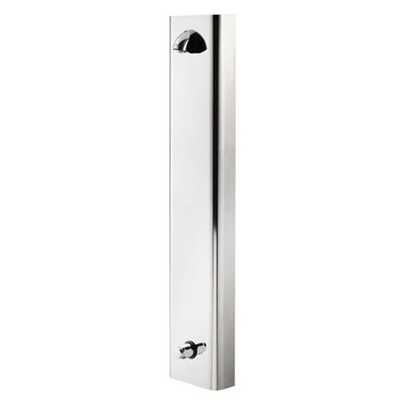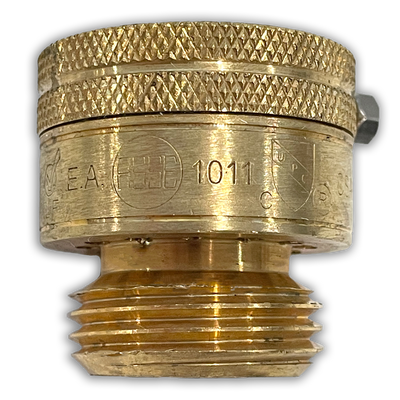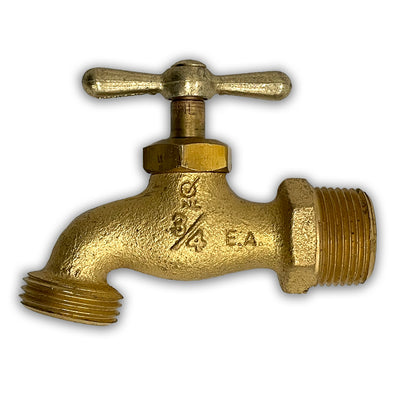Multi-Turn vs. Quarter-Turn Hose Bibbs
When it comes to outdoor faucets, commonly known as hose bibbs, there are two primary types to consider: multi-turn and quarter-turn hose bibbs. Both serve the same basic purpose of providing water access outdoors, but they operate differently and offer distinct advantages and disadvantages. In this blog post, we'll explore the key differences between multi-turn and quarter-turn hose bibbs to help you make an informed decision for your specific needs.
Multi-Turn Hose Bibbs
Multi-turn hose bibbs, also known as traditional hose bibbs or gate valve hose bibbs, have been a staple in plumbing for many years. Here are some characteristics of multi-turn hose bibbs:
1. Operation: Multi-turn hose bibbs use a threaded stem that must be turned several times to open or close the valve fully. The stem moves up and down to control the water flow.
2. Durability: These hose bibbs are generally known for their durability and longevity. They can last for many years with proper maintenance.
3. Control: Multi-turn bibbs offer precise control over the water flow, allowing you to adjust it incrementally to suit your needs. This level of control is particularly useful for tasks that require a specific water pressure, such as gardening or washing your car.
4. Maintenance: Over time, multi-turn hose bibbs may require maintenance, as the threaded stem can become prone to corrosion and leaks. Regular lubrication and maintenance can extend their lifespan.
5. Freeze Resistance: Multi-turn hose bibbs can be more prone to freezing in cold climates, as they may retain some water in the valve even when closed. Using a frost-proof version or winterizing your plumbing is advisable in such areas.
Quarter-Turn Hose Bibbs
Quarter-turn hose bibbs are a more recent innovation in plumbing and have gained popularity for their user-friendly design. Here are some characteristics of quarter-turn hose bibbs:
1. Operation: Quarter-turn hose bibbs are incredibly simple to use. They require only a quarter-turn of the handle (90 degrees) to open or close the valve fully. This quick operation is convenient and easy for people of all ages.
2. Durability: While quarter-turn hose bibbs are generally durable, they may have slightly shorter lifespans compared to multi-turn bibbs. However, their ease of use can outweigh this potential drawback for many users.
3. Control: Quarter-turn bibbs offer less precise control over the water flow compared to multi-turn bibbs. You can't adjust the flow as finely, which may be less suitable for tasks that require precise water pressure.
4. Maintenance: These bibbs are relatively low-maintenance, with fewer parts that can wear out or corrode over time. They are a good choice for those who want a hassle-free outdoor faucet.
5. Freeze Resistance: Quarter-turn hose bibbs are often designed to be frost-proof, reducing the risk of freezing during cold weather. This can be a significant advantage for regions with harsh winters.
Conclusion
In the debate between multi-turn and quarter-turn hose bibbs, there is no one-size-fits-all answer. The choice between the two largely depends on your specific needs and preferences.
If you value precise control over water flow, durability, and don't mind the additional maintenance, a multi-turn hose bibb might be the right choice. On the other hand, if you prioritize user-friendliness, low maintenance, and freeze resistance, a quarter-turn hose bibb may be more suitable.
Ultimately, both types of hose bibbs can provide reliable water access for your outdoor needs. Consider your climate, usage patterns, and personal preferences when making your decision, and don't forget to perform regular maintenance to ensure the longevity of your chosen hose bibb.
Multi-Turn Hose Bibbs
Multi-turn hose bibbs, also known as traditional hose bibbs or gate valve hose bibbs, have been a staple in plumbing for many years. Here are some characteristics of multi-turn hose bibbs:
1. Operation: Multi-turn hose bibbs use a threaded stem that must be turned several times to open or close the valve fully. The stem moves up and down to control the water flow.
2. Durability: These hose bibbs are generally known for their durability and longevity. They can last for many years with proper maintenance.
3. Control: Multi-turn bibbs offer precise control over the water flow, allowing you to adjust it incrementally to suit your needs. This level of control is particularly useful for tasks that require a specific water pressure, such as gardening or washing your car.
4. Maintenance: Over time, multi-turn hose bibbs may require maintenance, as the threaded stem can become prone to corrosion and leaks. Regular lubrication and maintenance can extend their lifespan.
5. Freeze Resistance: Multi-turn hose bibbs can be more prone to freezing in cold climates, as they may retain some water in the valve even when closed. Using a frost-proof version or winterizing your plumbing is advisable in such areas.
Quarter-Turn Hose Bibbs
Quarter-turn hose bibbs are a more recent innovation in plumbing and have gained popularity for their user-friendly design. Here are some characteristics of quarter-turn hose bibbs:
1. Operation: Quarter-turn hose bibbs are incredibly simple to use. They require only a quarter-turn of the handle (90 degrees) to open or close the valve fully. This quick operation is convenient and easy for people of all ages.
2. Durability: While quarter-turn hose bibbs are generally durable, they may have slightly shorter lifespans compared to multi-turn bibbs. However, their ease of use can outweigh this potential drawback for many users.
3. Control: Quarter-turn bibbs offer less precise control over the water flow compared to multi-turn bibbs. You can't adjust the flow as finely, which may be less suitable for tasks that require precise water pressure.
4. Maintenance: These bibbs are relatively low-maintenance, with fewer parts that can wear out or corrode over time. They are a good choice for those who want a hassle-free outdoor faucet.
5. Freeze Resistance: Quarter-turn hose bibbs are often designed to be frost-proof, reducing the risk of freezing during cold weather. This can be a significant advantage for regions with harsh winters.
Conclusion
In the debate between multi-turn and quarter-turn hose bibbs, there is no one-size-fits-all answer. The choice between the two largely depends on your specific needs and preferences.
If you value precise control over water flow, durability, and don't mind the additional maintenance, a multi-turn hose bibb might be the right choice. On the other hand, if you prioritize user-friendliness, low maintenance, and freeze resistance, a quarter-turn hose bibb may be more suitable.
Ultimately, both types of hose bibbs can provide reliable water access for your outdoor needs. Consider your climate, usage patterns, and personal preferences when making your decision, and don't forget to perform regular maintenance to ensure the longevity of your chosen hose bibb.




